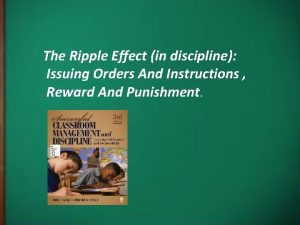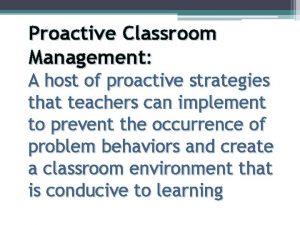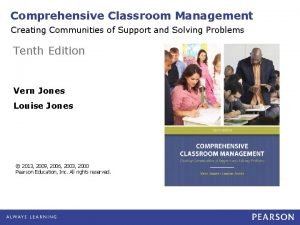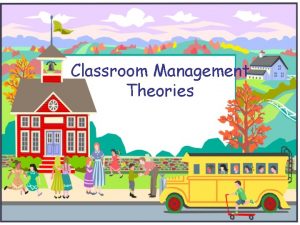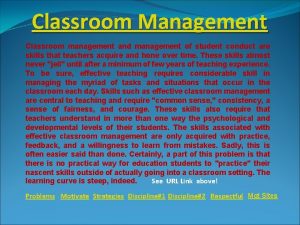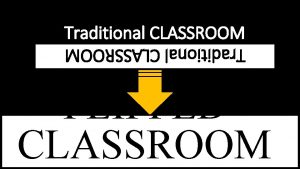CLASSROOM MANAGEMENT WHAT WHY HOW CLASSSROOM MANAGEMENT refers















- Slides: 15

CLASSROOM MANAGEMENT WHAT? WHY? HOW?

CLASSSROOM MANAGEMENT • refers to the way the teachers organize what goes on in the classroom.

Trends in Language Instruction

Teaching and learning are related but independent processes; therefore, a teacher plays a pivotal role to create effective management consisting of teacher behaviors that produce high levels of student involvement in classroom activities.


Problems of teachers: > I never have enough time! > How do I get students to use English > Name remembering

1) Whole-class teaching Advantages ØReinforces a sense of belonging among the group members. Ø It is suitable for activities where the teacher is acting as controller. Ø It allows teachers to gauge the mood of class in general.

1) Whole-class teaching Disadvantages ØEveryone is forced to do the same thing. Ø It may not encourage students to take responsibility. Ø It is not good to organize communicative language teaching.

2) Students on their own (individualized learning) Advantages ØIt allows students to respond individually. Ø It develops student autonomy. Ø It may be free from noise.

2) Students on their own (individualized learning) Disadvantages ØIt doesn’t help a class to develop a sense of belonging. Ø it wastes time if the teachers check the students’ product.

3) Pairwork Advantages ØIt allows students to work and interact independently. Ø It allows teachers time to work with one of the pairs. Ø It recognizes the old maxim “two heads are better than one”. ØIt is easy to organize.

3) Pairwork Disadvantages ØIt is usually noisy. Ø It allows students to discuss something else. ØIt can be problematic to choose a partner.

4) Groupwork Advantages ØIt increases broader skills of cooperation. Ø It promotes learner autonomy to make a decision. Ø It allows students to choose their own role.

4) Groupwork Disadvantages ØIt increases level of noise. Ø some students may fail to interact with the other members of the group. Ø Some members may be passive Ø It takes time to organize groups.

Thanks a lot • Practice makes perfect.
 Classsroom
Classsroom Goggle classsroom
Goggle classsroom Why why why why
Why why why why Btech smart classes
Btech smart classes Dont ask why why why
Dont ask why why why Ripple effect in teaching
Ripple effect in teaching Diana browning
Diana browning 16 proactive classroom management strategies
16 proactive classroom management strategies Diana browning
Diana browning Pbis wayne resa
Pbis wayne resa Classroom management plan example
Classroom management plan example Elements of classroom organization
Elements of classroom organization Momentum in classroom management
Momentum in classroom management Ripple effect kounin
Ripple effect kounin Comprehensive classroom management
Comprehensive classroom management The canter model
The canter model





